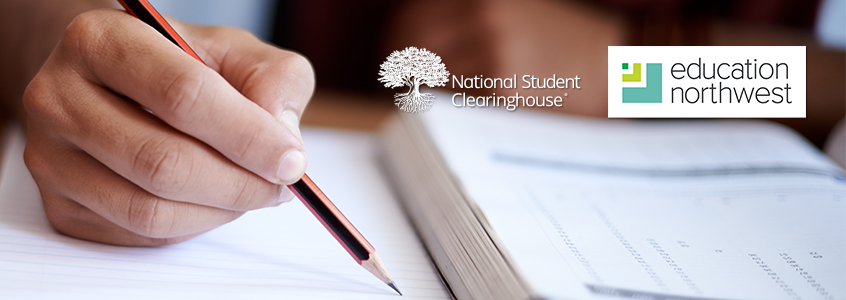- BLOG HOME
- »
- StudentTracker for High Schools Case Studies
- »
- Supporting Rural Oregon Students in High School and Beyond

Supporting Rural Oregon Students in High School and Beyond
 By Sam Riggs, researcher, Education Northwest
By Sam Riggs, researcher, Education Northwest
Two-thirds of Oregon’s public high schools are in rural areas and 42% of Oregon grade 9–12 students attend a rural high school. In our collaboration with The Ford Family Foundation, Supporting Rural Students in Oregon in High School and Beyond: A Study of College Enrollment, Persistence, Transfer, and Completion Outcomes, Education Northwest looked at the challenges rural high school students face in Oregon and how education stakeholders can support them for postsecondary success.
Our study finds that rural students had lower rates of college enrollment, persistence, and completion than their nonrural peers — and the enrollment gap is growing. This means that, compared to nonrural students, rural students are less likely to enroll in college in the first place, more likely to drop out or otherwise leave college, and less likely to graduate.
These lower rates of college enrollment and other outcomes for rural students, as compared to nonrural students, can be found across nearly every segment of the rural student population, particularly males, and includes nearly all racial and ethnic groups.
4 Ways Education Stakeholders Can Help to Address These Gaps:
- Acknowledge the structural barriers facing many rural students — such as higher poverty rates and fewer resources among rural communities and schools — and invest in the necessary supports to help rural students realize their college aspirations.
- In addition to expanding college aspirations for rural students, Oregon stakeholders should continue to support efforts to improve community college completion rates. Rural students are more likely to attend Oregon community colleges than any other type of college.
- College preparatory opportunities, such as accelerated learning, are important for rural student success. Among rural students, 65% of those who took college coursework during high school went on to enroll in college, while only 36% of those who did not engage in such learning enrolled.
- Use National Student Clearinghouse data to track college enrollment, persistence, transfer, and completion outcomes for high school graduates from rural and nonrural communities. Our ability to track students in postsecondary institutions across the United States — and not just those within the state of Oregon — gave us a much more complete understanding of the college pathways taken by Oregon’s rural high school graduates.
By taking these steps, your state, high school, and district can ensure more equitable outcomes for rural students and embark on a better path to meet college completion goals.
To learn more about Education Northwest, contact me and for help with your data needs, contact the National Student Clearinghouse Research Center.
“Use the National Student Clearinghouse data to track college enrollment, persistence, transfer, and completion outcomes for high school graduates from rural and nonrural communities. Our ability to track students in postsecondary institutions across the United States — and not just those within the state of Oregon — gave us a much more complete understanding of the college pathways taken by Oregon’s rural high school graduates.”
Sam Riggs
Researcher, Education Northwest
Additional Resources:



